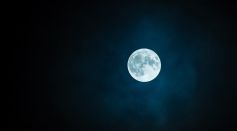SPACE

Disney’s New Space 220 Restaurant Is Indeed Out of This World; Here’s Why!
Augmented Reality Help Astronauts Fix, Maintain Equipment in the International Space Station Without Assistance From Ground Crew

NASA Viper Rover: Where Will This Space Agency Send This Golf Cart to Look for Ice?

Moon Has Great Impact on How Humans Sleep: More Than 850 People, Lunar Cycle Monitored for Years
'The Man Who Killed Pluto:' Mike Brown Believes New Planet More Worthy Than Former Ninth Planet
Mars Had Thousands of Massive Volcanic Eruptions That Changed Its Climate 4 Billion Years Ago, NASA Reveals
Planets, Sun, Moon, Asteroids Orbiting on the Same Plane; Reason for Such, Explored From 4.5 Billion Years Ago

SpaceX Inspiration4 Crew Shares How It Feels to Live in Space With a Stuffed Dog

TikTok Skin Care Trends: How To Get Rid of Acne According to Experts, Influencers
NASA Hubble Space Telescope Shares How Different Baby Stars Sound Like From Space

Conspiracy Theories Claim Apollo 16's Moon Landing Is Fake After Images of Astronauts Without Helmets Go Viral; Experts Debunk Hoax

SpaceX Inspiration4 Crew Completed Over 15 Orbits Around Earth, Shows Off Stunning View of the Planet From Cupola

China’s Tiangong Astronauts Return to Earth After Longest Space Mission Yet
Brazilian Amateur Astronomer Sees Unknown Object Exploding in Jupiter; Can You Guess What That Object Is?
Most Popular

Tree Communication Explained: How Underground Fungi Networks Connect Entire Forests

Space Tourism Future: How Commercial Space Travel Will Transform Civilian Exploration

How Space Observation and the Solar Light Spectrum Make the Sun Look Different in Space Than on Earth

Universe Origin Revealed: Exploring the Latest Big Bang Science Theories and Discoveries





